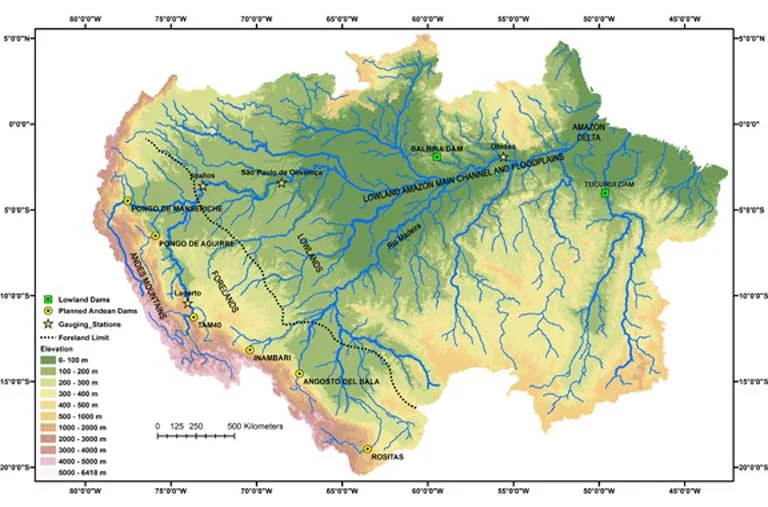More than 275 hydroelectric projects are planned for the Amazon basin, the majority of which could be constructed in the Andes whose rivers supply over 90 percent of the basin’s sediments and over half its nutrients.
A new study projects huge environmental costs for six of these dams, which together will retain 900 million tons of river sediment annually, reducing supplies of phosphorus and nitrogen, and threatening fish populations and soil quality downstream.
Accumulating sediments upstream of dams are projected to release 10 million tons of carbon into the atmosphere each year, significantly contributing to global warming, and would contaminate waters and the aquatic life they support with mercury.
The construction of these dams should be reconsidered to preserve food security and the livelihoods of millions of people in the Amazon Basin.

